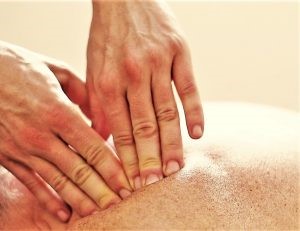
Identify perpetuating factors causing pain
March 16, 2018
King William’s TrP
March 17, 2018As massage therapists, our job is to address the perpetuating cause of your pain and work to prevent its return. A great deal of our success is helping to determine the origin of a client's complaint and then produce measurable results. You’ll find our therapist start with intake questions, ask about your history, and your symptoms. These things are important clues to how your treatment will proceed.
Here is a list of Causes of Injury:
- Muscle Fatigue
Massage Therapy promotes the relaxation response in the muscles while minimizing muscle tension and fatigue. Massage therapy targets both the structure and function of the musculoskeletal system while it also provides a therapeutic change. By modifying the physical form, it can affect the mental and spiritual state of a client. Massage will indirectly help the client to be more effective by dealing with their suffering. Massage will also create parasympathetic control to help support restorative sleep.
- Excess muscle tension.
Hypertonic is defined as having a greater degree of tension in a muscle. The excess muscle tone is due to muscle fibers shortening and can be present with painful, dysfunctional muscles. If muscles are in shortened position due to continuous contraction, overuse, abuse or misuse then spasm can result; however, reducing muscle tone can be resolved by massage if it’s not a long term condition. Depending on how long the hypertonicity has resided in the muscle will determined how soon it will go away or become better. Simple tension can develop into deep core tension in this situation. It’s better to have a massage sooner than later.
- Lack of Flexibility
The ability to move a joint or series of joints through a normal, unrestricted pain free range is called flexibility. As a muscle shortens, it is no longer able to stretch to its full length. The result is a weak, short and tight muscle. Loss of flexibility can also cause pain and reduce muscle strength. Since the muscles are locked up, it is impossible for the muscles to remain flexible. If a TrP is found in a muscle and you attempt to stretch it, a spasm can result. A typical muscle is the gastroc muscle.
- Muscle Imbalance
The reason that some muscles are not in balance is due to their attempt to compensate for postural and movement disproportion. Most symptoms and dysfunctional patterns are usually due to compensation. Although the body may begin to efficiently function over time, it can still show symptoms and exhibit pain. As massage therapists, we are looking for clues to unwind the pattern of inequity. We need to restore symmetry to the structure for it to adequately function.
- Overuse Syndromes
These syndromes are known as repetitive strain injury and cumulative stress disorder. They impact smaller muscles, such as the ones found within the neck and shoulder, wrist and arm. Due to the abnormal and repetitive stress injuries will occur. The injuries result from constant stress placed on the muscles, joints, and soft tissue. Injuries occur on the microtrauma level and can be debilitating. General massage is used to manage the pain and restore mobility. Massage can reduce edema that usually accompanies overuse syndromes. The different areas of the body that are affected by overuse include the muscles, ligaments, tendons, fascia and the bone. The initial reactions within the affected areas include acute inflammation and tissue repair. If the injury-causing activity continues then the microtrauma will also continue, ruining the repairing scar tissue. Chronic inflammation then occurs which leads to decreasing the range of motion of the tissue.




